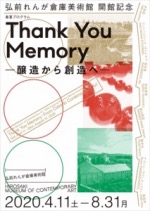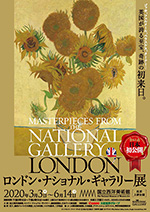 |
Picks is a monthly sampling of Japan's art scene, offering commentary by a variety of reviewers about exhibitions at museums and galleries in recent weeks, with an emphasis on contemporary art by young artists.
Note: Most of Japan's museums and galleries have reopened, but conditions and anti-coronavirus precautions vary. If you are planning a visit, please check the venue's website beforehand. |
 |
 |
|
|
 |
 |
 |
 |
| Moriyama Daido's Tokyo: Ongoing |
| 2 June - 22 September 2020 |
Tokyo Photographic Art Museum
(Tokyo) |
 |
| Now in his eighties, Japan's iconic "street photographer" just keeps on going. This solo exhibition, which features mostly recent snapshots of Tokyo, brings into relief certain subjects that Moriyama returns to obsessively -- lips and the back of the knee, to name two. Both are parts of the body that function as hinges between the conscious (outer) and subconscious (inner) worlds. One might say that Moriyama's images seek to initiate the viewer into the mysteries of the subconscious. |
|
|
 |
 |
 |
 |
 |
| Danh Vo oV hnaD |
| 2 June - 11 October 2020 |
The National Museum of Art, Osaka
(Osaka) |
 |
| Vietnamese artist Danh Vo explores resonance and convergence, as well as collision, among such phenomena as historical narrative, museums, transport, migration, immigrants and refugees, mobility and isolation. That complex dynamic undergirds the meticulous calculations and restrictions he imposes on the exhibition space in this solo show. "Works" concealed in shipping crates or wooden boxes personify the itinerant lives and cheap mobile labor of the world's migrants. Perhaps coincidentally they also remind us of the challenges of transporting art in the time of corona. |
|
|

|
 |
 |
 |
 |
 |
 |
| Kimono: Fashioning Identities |
| 30 June - 23 August 2020 |
Tokyo National Museum
(Tokyo) |
 |
| "The first-ever major survey of the kimono, from the Kamakura period to the present!" proclaims the p.r. copy. True to its word, the show's scale is awesome: some 300 kimonos and kimono-related accessories and artworks, including several items that are National Treasures or Important Cultural Properties. Also impressive is that so many are from the museum's own collection. One highlight is the chance to get a close look at kimono designs by such masters as Korin Ogata. The artistry that goes into the weaving, background patterns, embroidery, and tie- and stencil-dyeing of these works is glorious to behold. |
|
|
 |
 |
 |
 |
 |
| Thank You Memory: From Cidre to Contemporary Art |
| 1 June - 22 September 2020 |
Hirosaki Museum of Contemporary Art
(Aomori) |
 |
| In the inaugural exhibition at this new museum, housed in a former cider brewery, "brewing" is the keyword for an assemblage of works inspired by memories of the city of Hirosaki. Instead of serving as the showcase for an existing collection, the museum says it will grow by commissioning new works, as it has for this show. If it maintains this approach, Hirosaki MOCA may well accumulate a collection that becomes a significant part of the region's cultural assets.
|
|
|
|
|
|
|
|

|
 |
 |
|
 |
 |
 |
 |
| Olafur Eliasson: Sometimes the river is the bridge |
| 9 June - 27 September 2020 |
Museum of Contemporary Art Tokyo
(Tokyo) |
 |
| Every installation here is well made and very pretty, but the principles and methods -- light art utilizing the properties of light and color, automatism applying the laws of chance -- have already been explored by 20th-century avant-gardists. Certainly there is something to be said for giving such approaches a new look, with higher production values as well as a message about environmental problems. But even that starts to feel calculated.
|
|

|
 |
 |
 |
 |
 |
 |
 |
| 9th Emerging Artists Exhibition |
| 9 June - 30 August 2020 |
Kawaguchi Art Gallery ATLIA
(Saitama)
|
 |
| This open-call show on the theme of Kawaguchi, a northern suburb of Tokyo, features workshops and on-site collaborations with local residents. One of the two artists selected, Natsuka Endo, has submitted a set of large paintings based on stories she heard about Kawaguchi from residents. Written on the gallery wall, these stories are mundane but fascinating. Though the paintings do not have much artistic impact, their earnestness leaves a positive impression. Hopefully plenty of Kawaguchians will come to see them. |
|
|
 |
 |
 |
 |
 |
| Masterpieces from the National Gallery, London |
| 18 June - 18 October 2020 |
The National Museum of Western Art
(Tokyo)
|
 |
| London's National Gallery is known for its small but world-class collection of European paintings. How did it manage to acquire so many masterpieces? One reason is certainly the wealth and reach of the British Empire during the 19th century, but it is fair to say that many of these works became famous because they were acquired by the National Gallery. Britishers of the day purchased much art from Italy and France, and propagated views on art history and aesthetics derived from collections like those in the National Gallery, the British Museum, and the Courtauld Gallery. |
|
|
|
|
|
|
|
|
|
 |
|